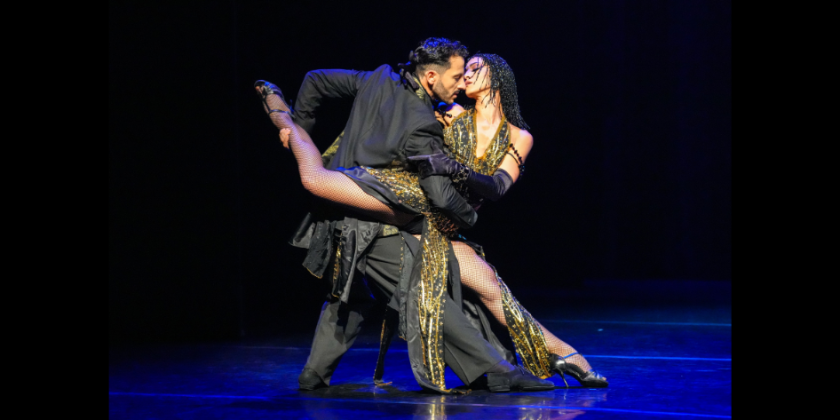IMPRESSIONS: Doug Varone and Dancers

IMPRESSIONS: Doug Varone and Dancers
October 9-14th, 2012 at The Joyce Theater
Choreography by Doug Varone
Performed by Hollis Bartlett, Xan Burley, Julia Burrer, Erin Owen, Alex Springer, Colin Stilwell, Eddie Taketa, Hsiao-Jou Tang, and Netta Yerushalmy
November 2012
Garnet Henderson for The Dance Enthusiast
It's easy to pigeonhole a choreographer and to assume that you’re so familiar with their distinct style, you know exactly what to expect when you sit down to a performance. But, distinct doesn’t mean static, and Doug Varone and Dancers’ recent run at The Joyce Theater serves as a reminder that choreographers constantly evolve. This year marks Varone's 25th anniversary, and the works chosen for The Joyce reflect a wide variety in his choreographic trajectory.
When I arrived at the theater for Program B (the company presented two programs at The Joyce), I thought I knew what I was about to see. This isn’t to say that I expected a predictable or boring performance. Rather, when I think of Varone’s work, specific imagery floats to mind. I see dances stretching that exhilarating balance between precision and abandon, and then there are those undulating limbs.
What followed was a reminder never to make assumptions. In 25 years, a choreographer and company can cover more terrain than you’d expect. This becomes especially apparent when viewing works spanning different periods side by side.
The first piece of the evening was Boats Leaving, a 2006 creation set to Te Deum by Arvo Pärt. The piece, a study in stillness, begins with the dancers standing in a ring around the stage, silhouetted against Jane Cox’s glowing blue light. They frequently stop dancing to strike pedestrian poses, constructing spatial relationships that dissolve just as soon as they crystallize.
Boats Leaving leaves behind several compelling images, including the time the entire group of eight dancers stops to directly face the audience. Every dancer has his or her eyes averted from us save for one, who covers her mouth with her hand. Some dancers casually lean on one another, evoking a family photograph. Others look as if they are mourning or praying; their downcast gazes hinting at something darker. Another arresting moment happens when the dancers lie on their stomachs in a rough diagonal line. Again, the lights dim to form shadowy silhouettes. Instead of surrendering to the floor, the dancers make tiny squirming motions, readjusting themselves to seek a new possibility.
 |
| Able to Leap Tall Buildings, Choreography by Doug Varone; Photo © Bill Hebert ; Dancers: Alex Springer and Erin Owens |
Throughout the piece the cast remained expressionless, the emotional quality revealed solely through pure movement. This casual delivery grew tiresome at times, especially during long, repetitive transitions between movement and stillness. Despite this, Varone’s vibrancy came through. The partnering became particularly gripping as dancers twisted and manipulated one another, falling down and throwing their weight about with a blend of care and recklessness.
Able to Leap Tall Buildings is a new duet for Erin Owen and Alex Springer. This dance shares remarkable similarities with Boats Leaving, especially in its stillness. But the expressionless delivery in Boats Leaving is a far cry from Springer and Owen’s performance, which is intense and raw without veering into melodrama. Encased in a box of white light designed by Doug Varone and Dan Feith, the edges of the couples' domain have been strictly defined. The rest of the space is pitch black. The dancers never leave their box - their entire existence is encased within.
Owen and Springer appear familiar yet uncomfortable with each other. A hint of aggression lingers in each movement, and when they are still, it is often because one has forcibly stopped the other. A striking moment occurs when Owen quickly places her elbow on Springer’s shoulder and holds it there, staring into his eyes. Her arm is bent at a 90-degree angle with her fingers pointing upwards. Both dancers’ chests rise and fall with their breath. At one point, Owen climbs up Springer’s body like a tree. She struggles, throwing her limbs this way and that, and Springer’s body jerks in response. The force seems enough to push him over, but he remains grounded, quietly absorbing the shock of Owen’s rapid movements.
 |
| Able to Leap Tall Buildings, Choreography by Doug Varone; Photo © Bill Hebert ; Dancers: Erin Owens and Alex Springer |
There are a few movements that seem out of place in Tall Buildings, such as the time Owen hops towards Springer with her waist slightly bent and with her legs spread wide. It illustrates the awkwardness between Owen and Springer and achieves a comedic effect in its repetition.
The last piece, Rise, was first presented in 1993. Full of energy and unceasing motion, this performance was more in line with my mental picture of a Varone dance (however flawed that may be). Eight dancers slice the space with their daring lunges and lightning-fast directional changes. They maintain remarkably fluidity, especially in their upper bodies. Hollis Bartlett delivers a particularly stunning solo, dazzling us with a mystifying blend of control and release.
 |
| Rise Choreography by Doug Varone; Photo © Bill Hebert; Dancers: Hsiao-Jou Tang and Alex Springer |
The program was an eye-opener. While it’s true that Doug Varone possesses a unique and recognizable style, there is more variety and nuance than one might expect.
Doug Varone and Dancers
For a Doug Varone and Dancers Preview including video of Boats Leaving in rehearsal, see The Dance Enthusiast click here.













